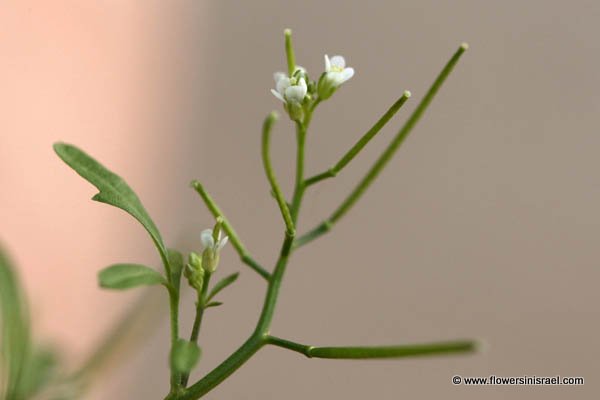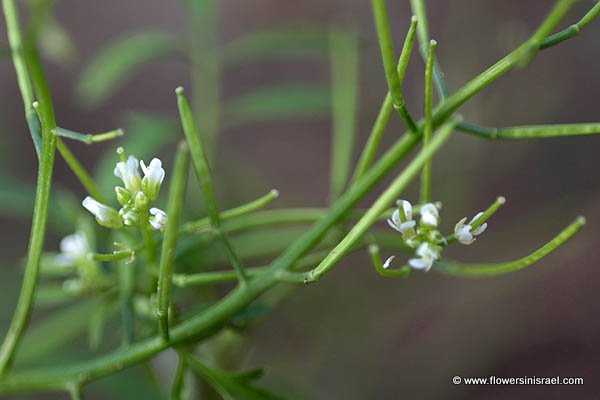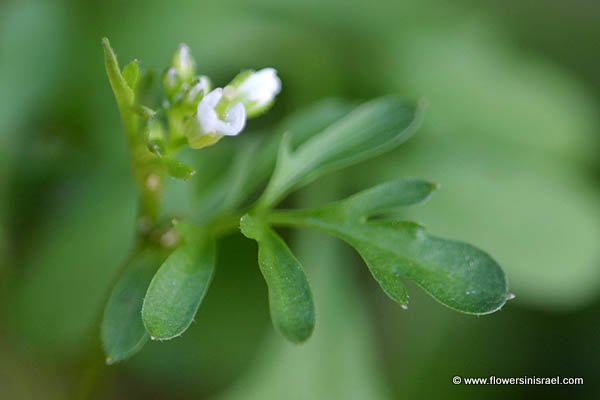Hebrew: קרדמין שעיר, Arabic: الحُرْف الزغبي
| Scientific name: | Cardamine hirsuta L. | |
| Common name: | Hairy bittercress, shotweed, snapweed | |
| Hebrew name: | קרדמין שעיר | |
| Arabic name: | الحُرْف الزغبي | |
| Family: | Cruciferae / Brassicaceae, מצליבים |

|
| Life form: | Annual | |
| Stems: | under 30 cm high; mostly erect, smooth, angled stems branch mainly at the base, glabrous | |
| Leaves: | Basal rosette, pinnate (2 to 10 pairs), round or wedge-shaped leaflets, terminal leaflet larger, petioles hairy at base | |
| Flowers: | Hermaphrodite, white flowers in terminal clusters; flower diameter c 2-3.5 mm; 4 petals, 4 stamens | |
| Fruits / pods: | Silique, about 2.5cm long, flattened, upward-pointing capsules | |
| Flowering Period: | February, March, April, May, June, July | |
| Habitat: | Batha, Phrygana, Disturbed habitats | |
| Distribution: | Mediterranean Woodlands and Shrublands, Deserts and extreme deserts | |
| Chorotype: | Med - Euro-Siberian | |
| Summer shedding: | Ephemeral |

Derivation of the botanical name: Cardamine, Greek kardamon used by Dioscorides for some cress, since many species resemble watercress in appearance and flavor; maybe used in treating heart ailments. hirsuta, rough, shaggy, bristly; hairy.

|